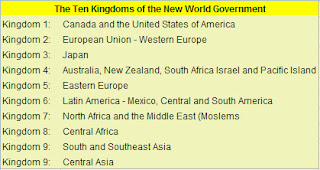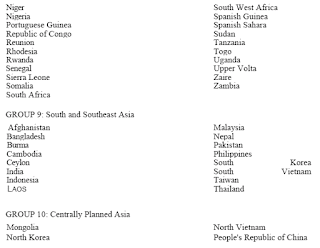Regionalized and Adaptive Model
of The Global World System
Report on the Progress in the
Strategy for Survival Project
of the
Club of Rome
1. Motivation and Objectives
The world problematique formulated by the CLUB OF ROME is not only global in nature, involving factors traditionally considered as unrelated, but also points to the crisis situations which are developing in spite of the noblest of intentions and, indeed, as their corollary.
To point out the problematique and the spectrum of critical and traumatic situations it entails is not enough; the acceptance of the reality of the problematique MUST BE FOLLOWED BY CHANGES IF THE CONCERN IS NOT TO REMAIN PURELY ACADEMIC.
It is necessary, therefore, to present the issues within the problematique in specific and relevant terms which requires regions interpretation of the global issues. Furthermore, a basis should be provided for the resolution of conflicts (inevitably accompanying the problematique-type situations) through cooperation rather than confrontation.
These factors have provided the motivation for initiation of the Strategy for Survival project which calls for the construction of a regionalized and adaptive model of the total world system with the following specific objectives:
- TO ENABLE THE IMPLEMENTATION OF SCENARIOS FOR THE FUTURE DEVELOPMENT OF THE WORLD SYSTEM which represent visions of the world future stemming from different cultures and value systems and reflecting hopes and fears in different regions of the world.
- To develop a planning and options-assessment tool for long-range issues, and thereby TO PROVIDE A BASIS FOR CONFLICT RESOLUTION by cooperation rather than confrontation.
2. Basic Structure of the Model
The basic characteristics of the model are:
The basic characteristics of the model are:
- THE WORLD SYSTEM IS REPRESENTED in terms of interacting regions with provisions made to investigate any individual country or sub region in the context of regional and global development.Presently the world system is represented BY TEN REGIONS:
- NORTH AMERICA
- WESTERN EUROPE
- EASTERN EUROPE
- JAPAN
- REST OF DEVELOPED WORLD
- LATIN AMERICA
- MIDDLE EAST
- REST OF AFRICA
- SOUTH AND SOUTH EAST ASIA
- CHINA
- In order to be able to deal with the complex of factors involved in problematique in a way which is sound, credible and systematic, a hierarchical structure has bee adopted for the model in which each level in the hierarchy represents the evolution of the world system within a context defined by a given set of laws and principles.
Specifically, the levels involved are:- GEO-PHYSICAL
- ECOLOGICAL
- TECHNOLOGICAL (MAN-MADE ENERGY AND MASS TRANSFERS)
- ECONOMIC
- INSTITUTIONAL
- SOCIOPOLITICAL
- VALUE-CULTURAL
- HUMAN-BIOLOGICAL
Such and approach enables an optimal use of confirmed scientific knowledge and available data - An adequate view of the conditions in which the problematique is emerging and under which the solutions must be found require the recognition of the purposive aspects of the human community and adaptiveness of human beings.The model of the world system will have, therefore, two parts:
- the so-called causal part, representing dynamical processes which follow historical patterns of development
- the so-called goal-seeking part which represents purposive changes under new conditions. The goal-seeking part in turn includes two levels:
- the decision-making or actions level
- the norms level
The former represents the purposive response of the system while the latter represents the values and norms which constrain and condition such a response.
3. Progress in the Model Construction
The construction of the model as described in Sec. 2 and with the objectives as specified in Sec. 1 is certainly a rather complex task and the research is organized to proceed in parallel in several directions.
The construction of the model as described in Sec. 2 and with the objectives as specified in Sec. 1 is certainly a rather complex task and the research is organized to proceed in parallel in several directions.
The overall assessment of the model status is the following:
The model has been developed up to the stage where it can be used for policy analysis related to a number of critical issues, such as:
- energy resources utilization and technology assessment
- food demand and production
- population growth and the affect of timing of birth control programs
- reduction of inequities in regional economic developments
- depletion dynamics of certain resources, particularly oil reserves
- phosphorus use as fertilizer
- regional unemployment
- constraints on growth due to labor, energy or export limitation, etc.
Specific developments which enable use of the model as described above include the following:
OUR EFFORTS IN THE IMMEDIATE FUTURE WILL BE CONCENTRATED ON FURTHER USE OF THE ALREADY DEVELOPED MODEL.
THE PLANS INCLUDE EMPHASIS IN THE FOLLOWING THREE DIRECTIONS:
- Assessment in the changes over time of the span of options available to solve some major crisis problems.
- IMPLEMENTATION of the regional models in different parts of the world and their connection via a satellite communication network for the purpose of joint assessment of the long term global future by teams from the various regions.








No comments:
Post a Comment